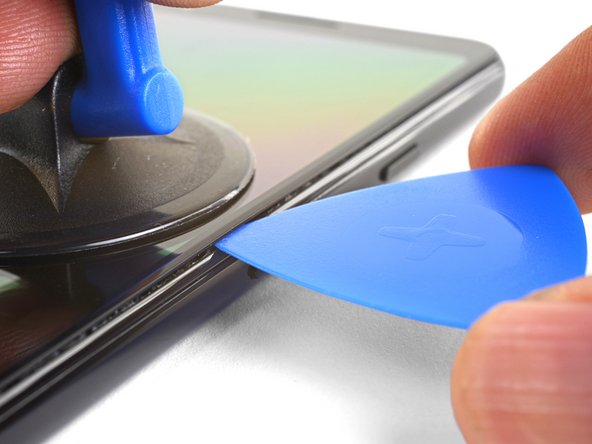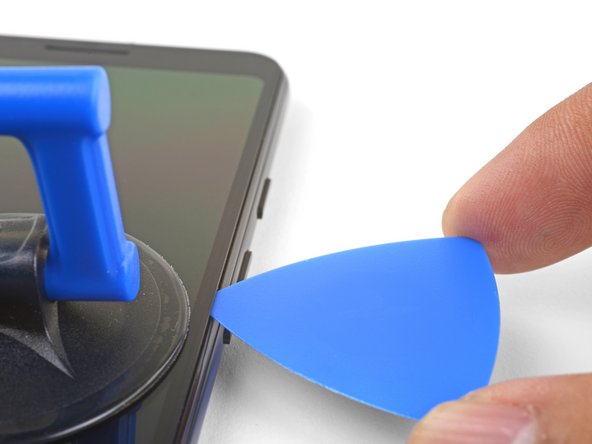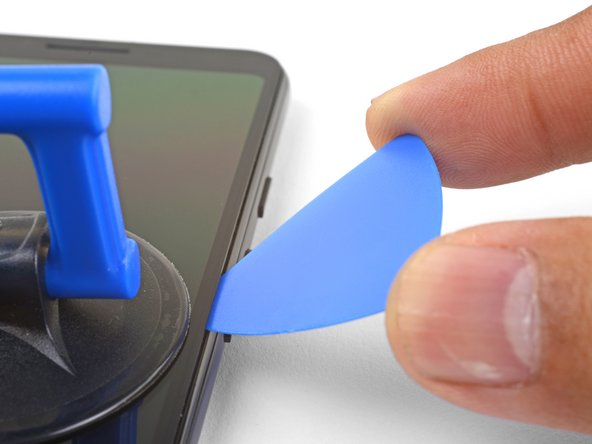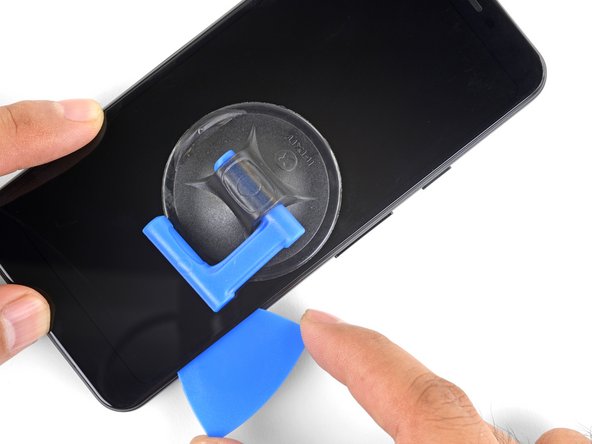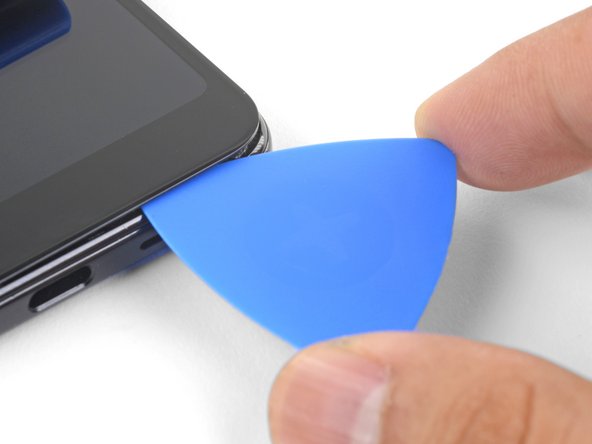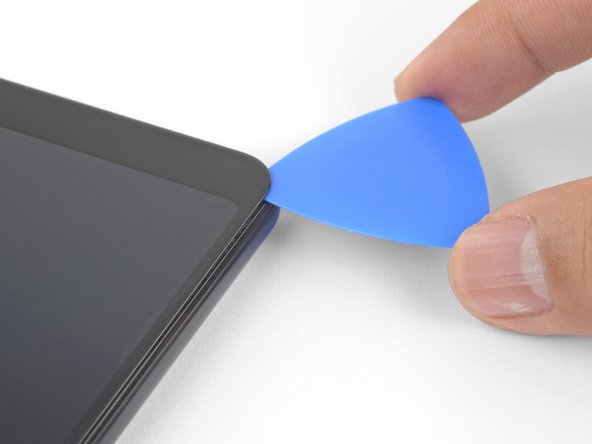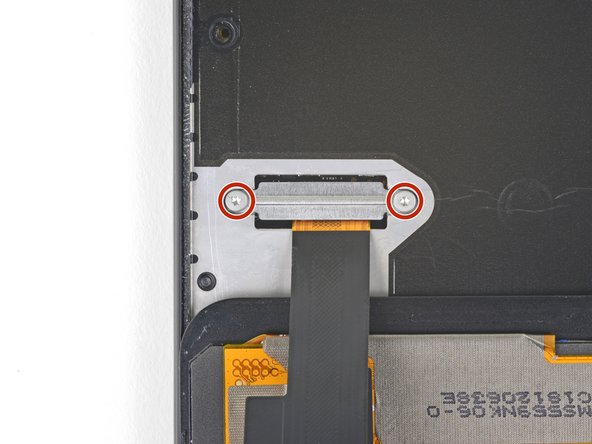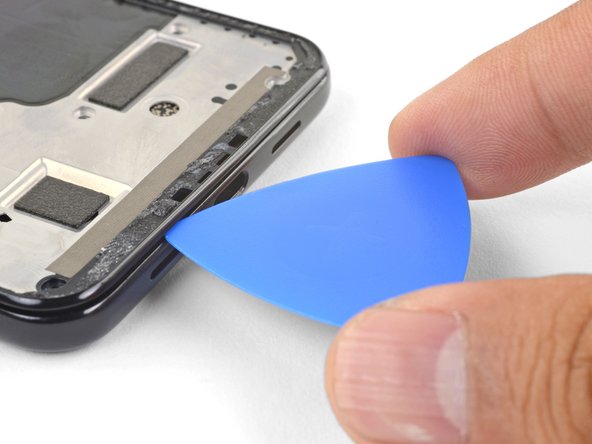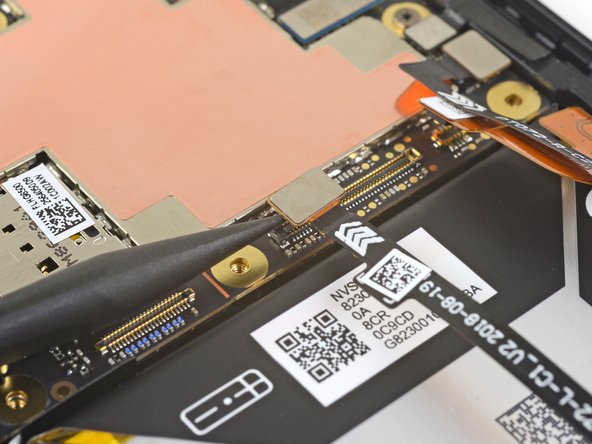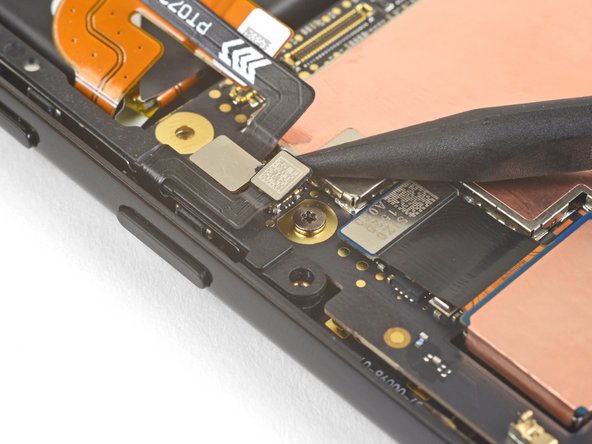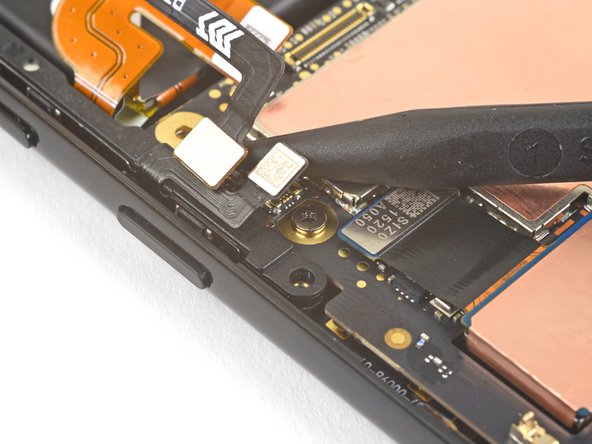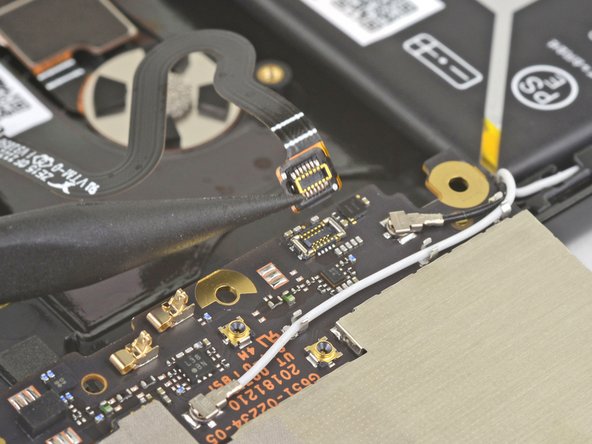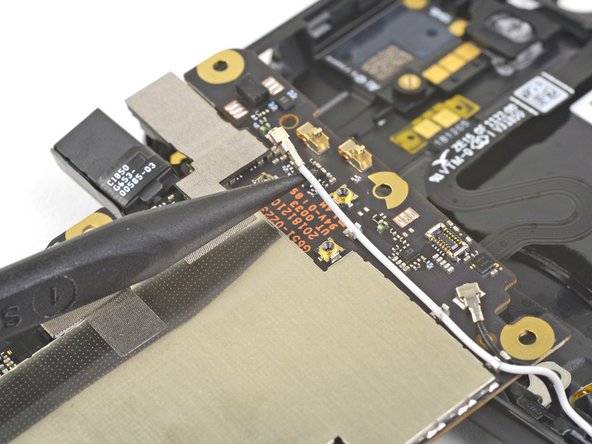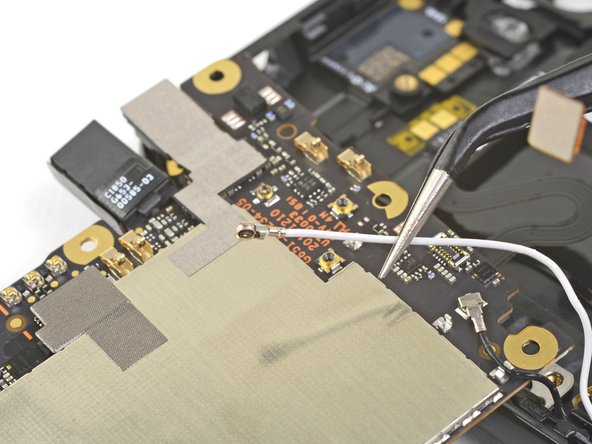Google Pixel 3a Motherboard Replacement Guide
Duration: 45 minutes
Steps: 30 Steps
This repair guide was crafted by the awesome iFixit staff and hasn’t been endorsed by Google. Learn more about our repair guides here. Remember, the Pixel 3a’s screen is super delicate, so be extra cautious!
This repair guide is your roadmap to replacing the motherboard on your Pixel 3a. It’s a straightforward process, but remember, the Pixel 3a’s display is pretty sensitive, so handle it with care. If you’re reusing the screen, take extra caution during the opening steps. Re-attaching the proximity sensor connector can be a bit fiddly, so take your time and don’t worry – it’s all part of the fun! If you need help along the way, you can always schedule a repair.
Step 1
– Time to get started – insert a SIM eject tool, SIM eject bit, or even a trusty paper clip into the SIM tray hole. It’s easier than you think!
– Gently press to eject the tray. If you need help, you can always schedule a repair
Step 2
– Keep an eye on those two seams on your phone:
– Before you start prying, take a moment to check out these key areas on the screen:
– Screen seam: This is the magical line that separates the screen from the rest of the phone. It’s your go-to spot for prying.
– Frame seam: This is where the plastic frame meets the back cover, held together by screws. Steer clear of prying here.
– Screen flex cable: Remember, don’t pry deeper than we suggest, or you might end up damaging this delicate cable.
– Adhesive perimeter: Prying beyond the slim perimeter without angling your pick could harm the display panel. So, keep it cool and stay within the lines!
Step 3
– Warm up your trusty iOpener and give a little love to the right edge of the display for about a minute.
Next up, we heat up the Pixel 3a! Though its screen adhesive is pretty wimpy, heating can still reduce the chance of a screen shatter. If you’re feeling unsure, remember that our friendly techs at Salvation Repair are always ready to lend a helping hand. Need any assistance? No sweat, you can always schedule a repair!
Tools Used
Step 4
– Gently place a suction cup close to the right edge of the screen.
– Give that suction cup a firm and steady pull—you’re doing great!
– Slide the pick into the gap, but keep it no deeper than 1 mm.
Step 5
Hold up there! If you start to feel that pick bumping against a ridge, it might be having a little dance with the edge of the OLED panel. Just tilt the pick a bit and give it another go!
In this step, we’re going to gently slide in the pick without hurting that delicate OLED panel. Make sure you do this before you tackle those long edges of your phone.
– Get that pick in there – insert it 1 mm into the gap and then pivot it upwards to a nice steep angle. You got this!
– Now, carefully push the pick into the gap about 1/4″ (6 mm). It should slide in smoothly below the OLED panel. If you need help, you can always schedule a repair
Step 6
Hey there, don’t go overboard with the pick! Just a little nudge, about 1/4 inch (6 mm), and you’ll be golden. Too much, and you might give that screen flex cable a little scare. Don’t worry, we’ve all been there. If you need help, you can always schedule a repair.
– Slide your tool along the right edge, like you’re cutting through butter.
– Leave your trusty tool in place so the adhesive doesn’t get all clingy again.
Step 7
As you gently slice around the bottom edge of the phone, make sure your pick doesn’t go in more than a quarter inch. Keep it cool!
If a corner feels a bit stubborn, give it a little love with a heated iOpener for a minute. Then, try again. You got this!
– Gently glide the pick around the bottom right corner to cut through that sticky adhesive.
– Keep on slicing along the bottom edge of the phone and around the left corner like a pro!
Tools Used
Step 8
– Gently slice through the left edge of the phone, carefully angling the pick below the OLED panel and sliding it in no more than 1/4″ (6 mm).
– To finesse the pick below the OLED panel, insert the tip of the pick just 1 mm in, angle it upwards, and slowly push it in 1/4″.
Step 9
– Gently glide your pick along the top edge, making sure to keep it within 5/16″ (8 mm) of the surface. You’re doing great!
Step 10
Hold up! Don’t go ripping that screen off just yet. There’s a sneaky little flex cable holding it on near the left edge. You’ll want to be careful with that one. If you’re not sure, you can always schedule a repair.
– Alrighty, awesome job! Now, let’s conquer this next step together. Super gently, we’ll lift the right edge of the screen. And, for any stubborn bits, our trusty opening pick will help us slice through that adhesive. Easy peasy, right? Need a lil’ help? No worries, you can always schedule a repair!
Step 11
– After all the adhesives are sliced up, flip the attached screen glass-side down and rest it on top of the phone, letting the screen flex cable chill in a loose arch. If you need help, you can always schedule a repair.
Step 12
– Gently peel away the black tape that’s securing the screen connector bracket. Treat it like a delicate flower!
– Unscrew those two T3 screws, each measuring 4.4 mm, holding the screen connector bracket in place. A little twist and they’ll be free!
– Now, lift off the screen connector bracket. It’s like unboxing a surprise—exciting, right?
– If the tape looks good, give it a second chance and reuse it during reassembly! If it’s looking a bit worse for wear, no worries—just grab a piece of electrical tape as a replacement.
Step 13
As you start disconnecting connectors like these, just a friendly reminder: keep an eye on those tiny surface-mounted components around the socket. They’re easily disturbed, and we want to keep everything in its place!
– Grab your trusty spudger and gently pry up to disconnect that screen flex cable. You’ve got this!
– When it’s time to re-attach, align those connectors like a pro! Press down on one side until you hear that satisfying click, and then give the other side some love too. Remember, no need to press down right in the middle! If things get misaligned, the pins might bend, leading to not-so-fun permanent damage. Stay sharp!
Tools Used
Step 14
– Alright, let’s get this screen swap going! First things first, remove that old screen.
– Now, take a peek at your brand new screen and compare it to the original. You might need to move a few parts (like the speaker mesh) over to the new screen. It’s like a mini-transplant!
– Ready to put that new screen in? Awesome! Follow these steps:
– Once you’ve put everything back together, your screen will go through a little calibration party during the boot-up process. Don’t touch it during the calibration show! You might mess up the touch calibration, and that’s no fun.
– If you’re using custom-cut adhesives, follow this guide .
– If you’re using double-sided tape like Tesa tape, follow this guide .
– If you need help, you can always schedule a repair
Step 15
– Time to unscrew! Grab your trusty T3 screwdriver and remove the fourteen screws holding that plastic midframe in place. Here’s what you’re looking for:
– As you work your magic, keep an eye on those screws! Make sure each one finds its way back to its original home.
– Twelve shiny 4.3 mm silver T3 screws
– Two sleek 4.3 mm black T3 screws
Step 16
The midframe is still snugly secured by those trusty plastic clips.
– Let’s get this phone open! Slide an opening pick into the seam at the bottom of your phone, where the plastic midframe meets the back cover. You’ll feel a slight give.
– Now, gently slide that pick along the seam to release the clips holding the midframe in place. It’s like giving the phone a little massage!
Step 17
– Alright, let’s get this party started! Slide that opening pick along the left and right edges of your phone to free those midframe clips.
– Now, give the bottom edge of the plastic midframe a little lift. Don’t yank it off just yet, though, because it’s still hanging on by that delicate proximity sensor cable at the top.
– To put everything back together, just line up the midframe with the back cover and give the phone a good squeeze all around. Those clips will snap right back into place.
Step 18
If your proximity sensor connector decides to take a little vacay while you’re holding your phone’s midframe, no worries! Just make sure to give it a friendly wave and coax it back into place.
– Grab your trusty spudger and gently lift up to disconnect the proximity sensor connector from the motherboard—easy does it!
– Next, let’s get that plastic midframe out of the way.
Tools Used
Step 19
Alternatively, feel free to detach the proximity sensor from the midframe and give it a cozy spot on the motherboard first.
– Let’s reconnect that proximity sensor! This step will help you put it back where it belongs.
– Line up the top edge of the plastic midframe with the phone. You got this!
– Use the tip of a spudger to carefully align and push the proximity sensor connector onto the motherboard socket. It might take a little patience, but you’re doing great! Once the connector is in place, you can gently press it onto the socket with your finger.
– Gently pry the proximity sensor out of its recess on the midframe. The sensor is lightly adhered to the midframe.
– Remove the sensor from the midframe. Attach the sensor connector onto its motherboard socket.
– Thread the sensor cable through the midframe and reposition the sensor in the recess. Press down with your finger to adhere the sensor back onto the midframe.
– If you need help, you can always schedule a repair
Tools Used
Step 20
– Time to get started. Use your trusty spudger to carefully pry up and disconnect the battery connector from its socket on the motherboard. Take your time, it’s an easy step.
– Now, gently bend the battery flex cable so it doesn’t accidentally make contact with the socket. You’re doing great, keep it up. If you need help, you can always schedule a repair
Tools Used
Step 21
– Now, grab your trusty spudger and use its pointy end to gently pry up and disconnect the interconnect flex cable from its motherboard socket. It’s like giving the cable a little nudge to say “see ya later!” If you need help, you can always schedule a repair.
Tools Used
Step 22
– Now, grab your trusty spudger and give that left squeeze sensor cable connector a little nudge. Gently pry it up and disconnect it from its home on the motherboard socket. You got this!
Tools Used
Step 23
– Let’s get those buttons disconnected! Use the point of a spudger to gently pry up the right buttons connector from its motherboard socket.
– Now, let’s give that right squeeze sensor cable connector some love. Carefully pry it up from its motherboard socket. You’re doing great!
Tools Used
Step 24
– Unscrew the lone 2.7 mm T3 screw that’s holding the motherboard in place on the right edge. You’ve got this!
Step 25
Don’t forget to pop out that SIM tray before diving into this step!
– Slide the flat end of your trusty spudger under the right edge of the motherboard and gently lift it up to set the board free.
Tools Used
Step 26
Keep that motherboard in place! It’s doing a great job holding everything together, so no need to detach it from the rest of the phone.
– Now it’s time to get the motherboard into position. Gently grasp the right edge and swing it to the left until it’s lying flat. If you need help, you can always schedule a repair
Step 27
– Grab your trusty spudger and gently leverage it to lift and detach the fingerprint sensor cable from its cozy spot on the motherboard. You’ve got this!
Tools Used
Step 28
If you’re just swapping out the fingerprint sensor, you can skip the full motherboard removal – just jump ahead three steps. If you need help, you can always schedule a repair
– Grab your trusty spudger and gently pry up to disconnect that pesky white antenna cable from its cozy spot on the motherboard. You’ve got this!
– Now, take care as you untangle the cable from its clips. Carefully de-route it so it can breathe a little easier.
Tools Used
Step 29
– Time to get started. Use your trusty spudger to carefully pry up and disconnect the black antenna cable from its socket on the motherboard.
– Next, gently de-route the cable from the retaining clip to free it up.
Tools Used










